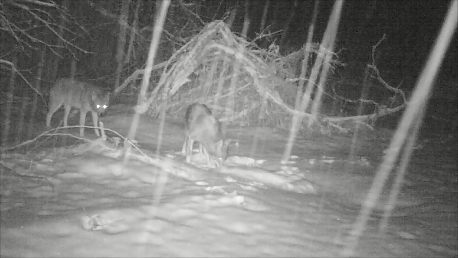 |
| On of the most intelligent animals on the planet - here looking particularly noble |
 |
| Crows usually have a lot to say - and they say it with a wide variety of vocalizations |
 |
| Crows make "cawing" sounds, knocking calls, clucking calls, staccato trills and more |
 |
| A Red-winged Blackbird scolds a crow that enters his breeding territory |
 |
| A pair of family members perched together at the end of the day |
 |
| Crows scatter from the bird-feeder table |
 |
| Less than a minute later, they're all back |
 |
| Some Crows gathered at a deer carcass |
 |
| Coyotes feed on the carcass primarily at night |
 |
| A coyote remained at the site for around an hour after sun-up |
 |
| The Coyotes return a few days later during a snow storm, but there's not much left of the deer |

No comments:
Post a Comment